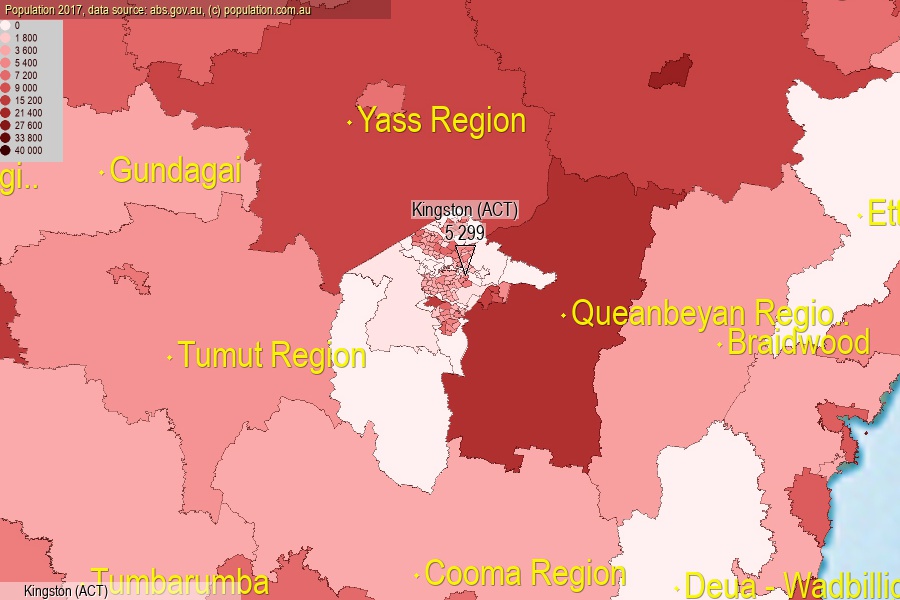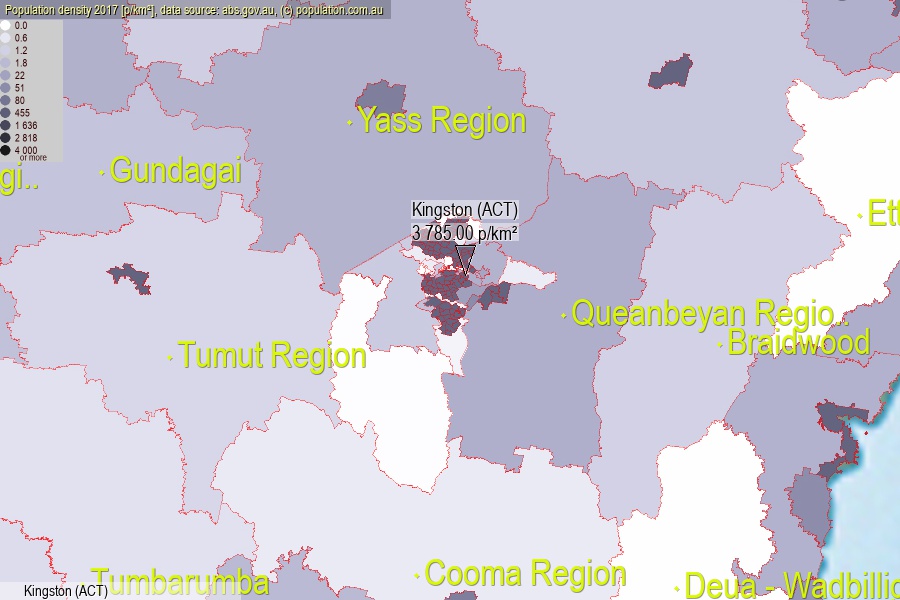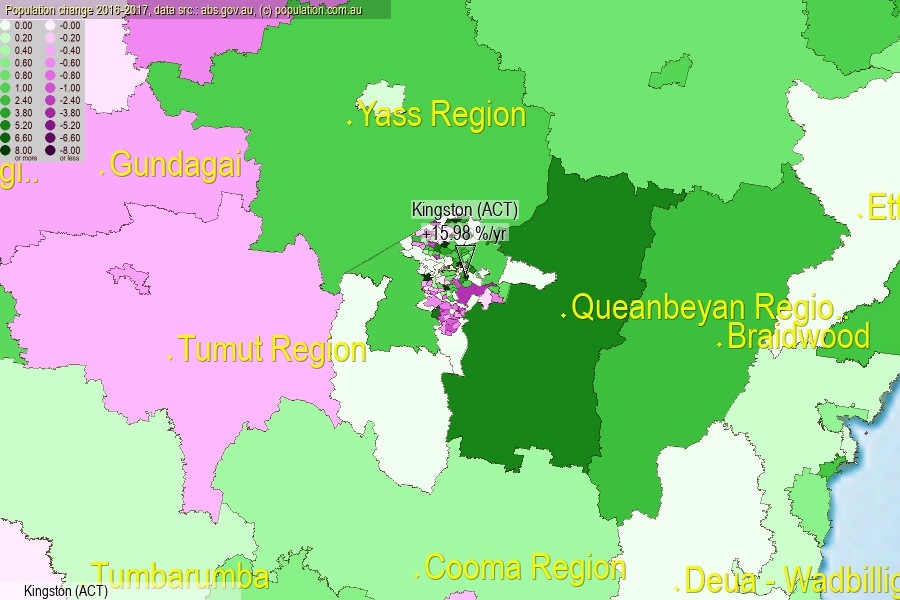 population.com.au
population.com.auLast official estimated population of Kingston (ACT) (as Statistical Area Level 2) was 5 299 people (on 2017-06-30)[2]. This was 0.02% of total Australian population and 1.264% of ACT population. Area of Kingston (ACT) is 1.40 km², in this year population density was 3 785.00 p/km² . If population growth rate would be same as in period 2016-2017 (+15.98%/yr), Kingston (ACT) population in 2025 would be 17 345. [0]



Click to enlarge. Kingston (ACT) is located in the center of the images.
Population [people], population density [p./km²] and population change [%/year] [2]
View borders » (new window) [4]
[2001-2002] +0.36 %/Yr.
[2002-2003] -1.23 %/Yr.
[2003-2004] +2.02 %/Yr.
[2004-2005] +8.74 %/Yr.
[2005-2006] +19.72 %/Yr.
[2006-2007] +9.21 %/Yr.
[2007-2008] +1.82 %/Yr.
[2008-2009] +4.18 %/Yr.
[2009-2010] +2.29 %/Yr.
[2010-2011] +4.12 %/Yr.
[2011-2012] +9.90 %/Yr.
[2012-2013] +8.15 %/Yr.
[2013-2014] +7.37 %/Yr.
[2014-2015] +5.88 %/Yr.
[2015-2016] +6.98 %/Yr.
[2016-2017] +15.98 %/Yr.
[0] Calculated with linear interpolation from officially estimated population
[1] Read more about SA2 and Australian Statistical Geography Standard (ASGS) on abs.gov.au
[2] Population data from Australian Bureau of Statistics (Population and density: 2017; change: 2016-2017)
[3] Digital Boundaries: Australian Statistical Geography Standard (ASGS) 2016.
[4] Border coordinates are simplifyed using Ramer-Douglas-Peucker algorithm.